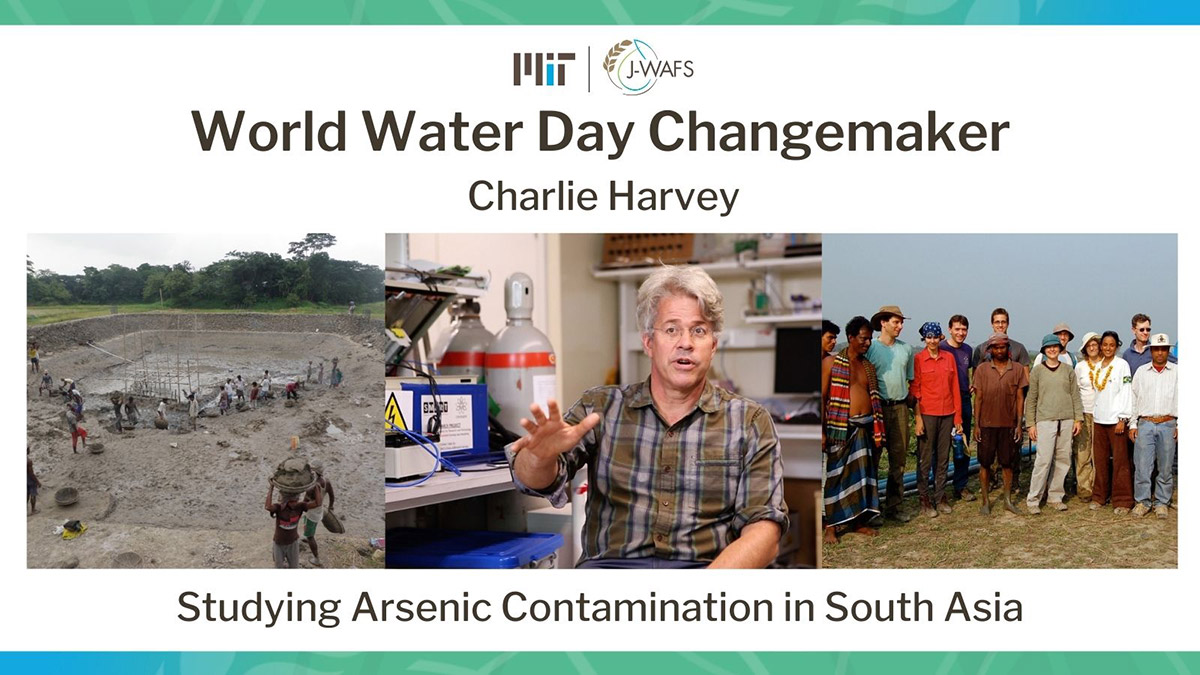News World Water Day 2022 Research Highlight: Decreasing arsenic exposure in Bangladesh
Charlie Harvey of Civil and Environmental Engineering is trying to understand how to safely site wells to prevent arsenic poisoning from groundwater in Bangladesh.
Carolyn Blais, J-WAFS March 22, 2022

Over the last decade, most people living in Bangladesh stopped retrieving their drinking water from ponds and rivers and instead started drinking groundwater from wells. They switched because the pond and river water were contaminated by disease. Sadly, however, much of the groundwater in Bangladesh is contaminated by naturally occurring arsenic of dangerous concentrations. Ingesting water that is high in arsenic has been known to cause cancer, heart disease, and other serious issues. It also causes motor dysfunction in children and can be fatal for infants. As a result, the people of Bangladesh must find safe, uncontaminated wells nearby or newly installed deep wells that extract from below the contaminated level.
Charles Harvey, professor of civil and environmental engineering, is recognized for groundbreaking theoretical work and large-scale field research related to groundwater contamination. He is currently conducting research through a J-WAFS seed grant project to try to understand how to best site wells to provide safe water. So far, Harvey's research has shown the following:
- Providing people in Bangladesh with measurements of arsenic concentration in their well water led to reduced exposure across a village. This approach can only continue to work only if there is a program to share new measurements from both new and old wells
- Well switching programs typically must choose between measuring arsenic concentrations in fewer wells using high-accuracy laboratory-based methods or measuring more wells using low-accuracy, but low-cost, field kits. An analysis of arsenic concentrations measured from 10,000 wells showed that using the more low-accuracy field kits will lead to much greater improvements in population health
- Blanket well testing, education campaigns, and community wells in one example village in Bangladesh correlate with a decline in arsenic exposure
